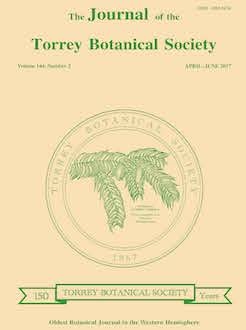Reproductive success in the federally threatened species Asclepias meadii is limited by several factors, including the increasing age and fragmentation of populations, low fruit set, and potential disease. We investigated the reproductive ecology of three isolated populations of A. meadii over five seasons (2010–14) in Missouri and Kansas. Experimental hand-pollinations showed that flowers at all sites were incapable of automatic self-pollination (autogamy) and lacked early acting self-incompatibility. The average number of ovaries with pollen tubes in open (insect-mediated) pollination varied from 0.10 to 0.81 depending on site and season. The conversion rate of ovaries into fruits never exceeded more than two fruits per umbel with insect-mediated fruit set varying from 0% to 50% according to site and season. Nectar was the only reward with a per-flower volume as high as 5 μL containing dissolved sugars from 21% to ≥ 50%. The nectar was hexose dominant, and the amino acid content was limited to aspartic acid and arginine. Nectar-drinking insects were common visitors at all sites, but only three taxa in the family Apidae (Anthophora abrupta, Apis mellifera, and Bombus species) were consistent carriers of A. meadii pollinaria on their legs. Density and diversity of these three pollinaria carrying taxa also varied according to site and season. Although all three taxa were successful pollinaria vectors, the nonnative A. mellifera does not appear to be as efficient as the native species in the two other bee genera. Our findings offer evidence that Bombus species are especially successful in vectoring pollinaria between flowers of A. meadii; that pollen tubes are successfully reaching the ovaries in insect-mediated, hand-self, and hand-cross pollination events; and that automatic self-pollination (autogamy) does not occur.
How to translate text using browser tools
3 April 2017
Reproductive ecology of Asclepias meadii Torr. ex A.Gray (Apocynaceae), a federally threatened species
Retha M. Edens-Meier
ACCESS THE FULL ARTICLE
Asclepias meadii
floral phenology
fruit
pollination
stigmatic slits





